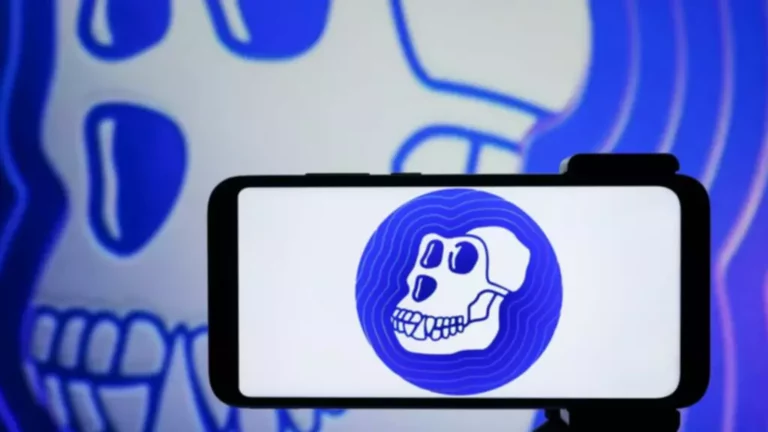FinTech
Altima IB is a multi-level platform that permits brokers to recruit partners, process knowledge and integrate into any know-how stack. Utilise a hybridized IB model to adapt to any technique, recruit companions, develop a community organically and attain a bigger viewers. Showcase a powerful trader’s cabinet that options an intuitive dashboard, real-time knowledge feeds and leads which may be absolutely customisable to any interface. The pockets is designed to make it simpler for you to manage your funds. To deposit on each account individually by way of fee systems, and in addition to not withdraw funds from each account separately, you can exclusively use the wallet.
Additionally, streamlined KYC procedures are also supplied, so you don’t even want entry to your computer to have the ability to manage crucial operations. An innovative strategy to outsourcing that revolutionizes relationships between Forex brokers and repair suppliers to reduce forex broker crm back costs while making certain maximum quality. Bridge the gap between your trading platforms and improve your workflow with Leverate Forex CRM. A support ticketing system lets you handle customer inquiries and requests centrally.
A la carte availabilitySome CRM providers require you to make use of a big selection of other companies they provide, like net improvement companies. Sometimes they require you to use a selected liquidity supplier that pays the CRM for providing business. This might seem useful if you’re simply starting out because you won’t want to decide on as many providers or do issues like arrange a webpage by yourself. However, it also locks you into the rates a single company sets and limits your ability to adapt as your brokerage grows.
Hence, CRM flexibility is crucial, enabling you to conduct business in your native time, no matter being in Tokyo, London, or New York. Reliable CRM systems can auto-adjust to broker’s and traders’ native time zones, which aids in easy interaction and administration. Every foreign exchange brokerage serves distinctive monetary markets, offers with diverse teams of traders, employs diversified enterprise models, and hence, has unique system necessities. Being in a place to customise a CRM system to seamlessly combine with these needs significantly simplifies operations.
What Is A Foreign Exchange Crm And Why Do You Want One?
A versatile solution ought to account for current merchants’ wants and future development prospects. A Forex CRM platform is normally designed to fulfill all companies’ wants and necessities. Outfitted with all essential components for ensuring protected trading for end-customers, such as KYC and PSPs integrations, this powerful system could be flexibly optimized
Simply require employees to make a note whenever they’ve an interaction with a shopper and to evaluation the notes earlier than they contact a shopper. This ensures that every time a trader talks to somebody at your brokerage, the worker will be in a position to precisely converse to what’s happened with their account prior to https://www.xcritical.com/ now. Platform agnosticAs your business wants shift and you increase into new markets, you might want to provide shoppers extra trading platforms. However, that can trigger software program complications when you haven’t chosen a platform agnostic forex CRM.
Automated workflow provides a revolutionary strategy to simplifying mundane duties, harnessing know-how for time and value savings. Streamlined actions may be triggered based mostly on occasions similar to account openings, deposits, and extra, releasing up your team’s priceless sources. The system can simplify operations by automating multiple processes and connecting departments through large networks of reports. Moreover, it facilitates safe access management to important organizational roles — so everyone appears to be stored in sync!

With FX Back Office, you need to use mobile accessibility with all necessary info included in the portable version. Thankfully, consultants acknowledge those that stand out concerning dependable solutions that deliver high quality results. API – integration with the info passed from server to server and the front-end being on the B2Core facet. A personal success supervisor will help you build the most fitting package on your wants. Wait for our official invoice from the official account department e-mail id which is [email protected] and then do the fee.
Straightforward Segmentation
Therefore, a profitable buyer relationship administration system (CRM) might help a broker in attaining a considerable competitive benefit while additionally generating a great return on his funding. Sophisticated UpTrader Forex CRM for brokers includes back office, trader’s room, and duplicate buying and selling software program for MT4, MT5 and cTrader brokers. Having worked within the monetary companies market for a very lengthy time, we do understand that for Forex brokers, time is money. UpTrader Forex CRM shall be branded in accordance with your corporate identity and totally customised to go properly with the wants of your small business. A CRM (customer relationship management) tool is a key part of a forex broker’s enterprise.

Motivate shoppers to deposit more, to commerce on reside accounts, to make buying and selling volumes utilizing the status system and its advantages. You can explore many ways to perform this objective since the settings are versatile.For instance, you can create a status system based mostly on the deposit quantity. The purchasers can distribute their funds from the wallet to all their trading accounts or put them back to the pockets. Clients from completely different areas can select through which fee system they need to deposit their trading accounts or their pockets.
How Am I Sure For The Crm Contract?
The CRM should also present reviews that make it easier to comply with the rules in your regulatory setting. Even if you currently function in an unregulated surroundings, having these reviews is helpful since rules can change rapidly. If you’re excited about particular stories, ask about those when the CRM provider is giving you a demo—which they should be desperate to do. Sales SupportMaking it simple for sales agents and IBs to generate and nurture leads is a central part of any CRM. The software program ought to enable you to keep track of all a lead’s contact info in addition to where they are within the sales funnel and the way usually they’ve been contacted. Ideally, the system should also let you monitor where the lead got here from to be able to focus your marketing efforts on the most profitable channels.

One means FX CRM tools do that is by letting you divide shoppers primarily based on a extensive variety of things, like nation of residence, annual earnings, or EMIR classification. This can help with shopper retention efforts, compliance management, and extra. In this video, B2Core Product Manager, Ivan Navodnyy, talks about considered one of B2Broker’s flagship merchandise, B2Core. CRM provides you with an environment friendly lead administration system that tracks all metrics similar to conversations, messages, follow-ups, meetings, webinars and telephone calls. It improves the possibilities of successfully closing a deal by helping the salesperson with the related shopper knowledge.
Integrate With Any Platform
Compliance toolsTechnology that helps monetary services firms tackle regulatory challenges, typically called RegTech, should be in-built to a good forex CRM. Look for software that allows you to handle KYCs and monitor whether or not or not purchasers have submitted the suitable paperwork. Consider how you’d like a CRM to help with KYCs, and ask whether the software is able to that during a demo. Cloud Forex CRM is a revolutionary cloud primarily based CRM answer designed to satisfy the wants of startups and established brokerage firms.
WebSDK – Sumsub front-end built-in into B2Core front-end and adapted to the client’s colors so the move is as smooth as attainable when passing the Liveness examine. Give your purchasers the chance to verify their trading exercise and analyze the vital thing metrics contained in the B2Core trader’s room. A supplier of know-how for multi-asset class execution, connectivity, aggregation, distribution and hub. Centroid Solutions is a know-how provider specializing in Risk Management, bridging, execution engine and hosting options for financial institutions. Our technical team will install and combine all of your brokerage elements. Moreover, a Forex CRM fosters excellent communication throughout the group, ensuring everyone is conscious of client standing, wants, and the approaches that work finest.

If you simply need the only option, we’ve added that proper at the high of the article as this was what is most requested by our prospects. Ideal, because in this article we have our compilation listing for our high picks, and we evaluate the features and pricing for you. Build custom HTML e mail templates and autoresponders to ship out on predetermined user actions or audience attributes.
Forex Crm: Forex Back Office
UpTrader works with trusted liquidity providers that may ensure finest costs and ideal executions. Back office solutions allow you to management your shoppers’ buying and selling, deposits, and withdrawals. Keep updated on KYC procedures for every client and launch sensible advertising activities rapidly with easy-to-use interface instruments. B2Core presents a bunch of options to help elevate your corporation experience.
Extra Fascinating Integrations
If you need to discontinue after three months, you should inform us no less than earlier than two weeks of the expiration of the primary quarter. FManage your small business from anywhere with our highly effective and intuitive Mobile App.
